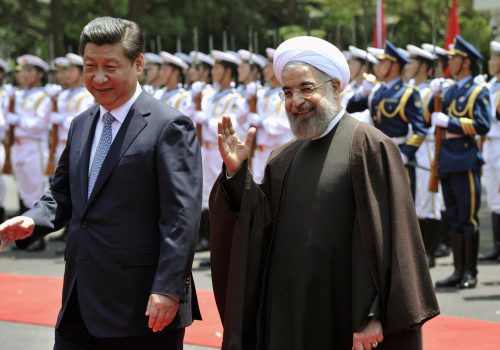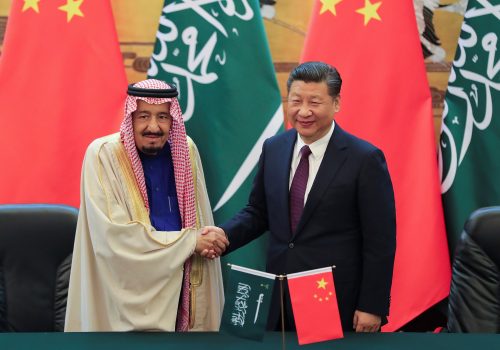Iran oil exports face a tough future even after the coronavirus
Even before the coronavirus pandemic erupted, Iran’s oil exports were declining as a result of secondary US sanctions. Global oversupply amid a drastic drop in consumer demand, caused by the virus and its economic effects, will likely continue to depress Iranian exports for months to come.
Prior to the US withdrawal from the Joint Comprehensive Plan of Action, (JCPOA) in May 2018, Iran was selling 2.5 million barrels of oil a day, primarily, to customers in Asia. Among the countries purchasing Iranian oil was India (in addition to China)—one of the world’s two largest energy consumers.
Diversification of energy resources, along with an increase in the share of renewable energy and nuclear energy, are fundamental elements of India’s national energy policy. New Delhi’s growing economy needs energy from reliable sources. While Beijing is expected to see the largest increase in energy demand in the world by 2030, India’s 2035 outlook will surpass China’s energy consumption.
India’s oil minister Dharmendra Pradhan said on April 29 that all oil reservoirs in the country—including strategic reserves and refineries—be filled by May. India’s total strategic and other storage capacity amounts to about 280 million barrels. Because of sanctions, Iran has lost the important Indian market and it appears difficult for it to return to its previous status.
India’s fuel demand fell 11 percent in March following the outbreak of the coronavirus. The country consumed about 19.5 million tons of petroleum products in March 2019. Given the nationwide quarantine in India, which includes travel restrictions between cities, oil consumption and petroleum products fell to 17.4 million tons, and can be expected to decline, again, for June.
Prior to the US withdrawal from the JCPOA, China was Iran’s major oil customer, purchasing up to a million barrels of oil a day. Supplying energy from reliable sources to China’s growing economy and diversifying energy resources are key principles of Beijing’s national energy policy.
Taking advantage of the collapse in oil prices due to the pandemic, China, actually, increased oil imports to replenish its storage tanks. In March, China’s oil imports were 9.68 million barrels a day, an increase of 4.5 percent when compared to 2019. Beijing also increased crude oil imports by 5.2 percent in January and February when compared to the previous year.
Customs statistics show that China escalated its oil imports from Russia by 30 percent in March, compared to the same period last year, while slightly decreasing imports from Saudi Arabia (totaling at approximately 1.7 million barrels). China also imported about 350,000 barrels a day from Iran in March, despite US sanctions.
Saudi Arabia is actively pursuing energy diplomacy in both China and India, investing heavily in the energy infrastructure of the two countries. Saudi Arabia is seeking to maintain its share of the energy market and to add value by converting oil into petrochemical products.
Russia is also looking to increase its share of the Chinese energy market through gas exports by means of the Power of Siberia Project, which plans to help diversify China’s imported energy resources. Russia estimates that this project will generate more than $400 billion over three decades and that Moscow will supply China with 38 billion cubic meters of natural gas (bcm) per year. Russia dominates the Chinese natural gas market and also has a plan to increase oil and LNG exports to China post-coronavirus.
Saudi Arabia and Russia, together, have also tried to keep their market share by selling low-priced oil at a special discount.
Furthermore, the United States has made inroads into the Chinese market. Last year, China and the United States signed a trade agreement that would export more than $50 billion in US oil and LNG to China in the first phase.
With its rich oil and gas resources, Iran will not be eliminated from the energy market, but, given the glut in world supply and the temporary collapse of demand, it will have less of a chance to play an active role in the market. Iran needs foreign investment and technology to increase its production capacity, but that will be hard to achieve without a resolution of US-Iran tensions and an easing of US sanctions. Iran’s energy sector also needs a better legal framework and a more efficient and rapid decision-making process to incentivize foreign participation in an uncertain market.
In the coming months, oil prices can be expected to gradually rise with declining production. Major energy-consuming countries should be able to overcome the problems of the coronavirus outbreak and restore economic growth. Competition between Russia, Saudi Arabia, and the United States will increase, but Iran is unlikely to benefit in the short and medium term.
Dr. Omid Shokri Kalehsar is a Washington-based analyst at Gulf State Analytics (GSA), also serving as a visiting research scholar in the Schar School of Policy and Government at George Mason University. Follow him at @ushukrik.
Image: Iranian Oil Minister Bijan Zanganeh speaks to reporters at the Islamic Republic’s petroleum ministry in Tehran, Iran April 29, 2017. Picture taken April 29, 2017. REUTERS/Alissa De Carbonnel


